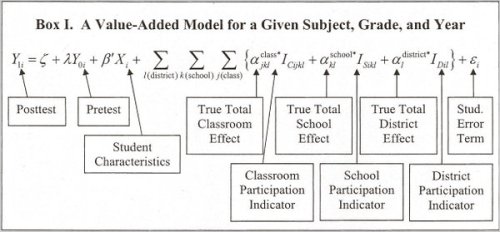New York Governor Andrew Cuomo has gotten a large boost in public approval both locally and nationally during the pandemic. That should not be a real surprise to observers. Contrasting his calm and technocratic approach to epidemiology with incompetence and chaos coming from Washington, D.C. was always going to play to his strengths and, oddly, turn some of his deficits into assets. In a time of crisis, people generally like a leader who is able to run roughshod over others who are not stepping up to the tasks given to them and who has a firm hand on the situation. Andrew Cuomo’s default setting is to crash through others and to slap away other hands from what he sees as his territory. The fact that New York, after a very rough start, is making real progress in decreasing cases and deaths is attributable to Cuomo’s governance.
Of course, overreach is also a part of Cuomo’s governance toolbox, so it really should not have surprised anyone that he chose Teacher Appreciation Week to announce that New York would partner with the Bill and Melinda Gates Foundation to “reimagine education” as we move forward.
The next sound you heard was the panic reflexes of 1000s of public education advocates and New York’s professional teachers. It brings back memories of Governor Cuomo’s first term and early second term attacks on the state’s education system and its teachers, and his efforts to tie teacher evaluation to test scores to dismiss 1000s of teachers. While largely abandoned in the second year of his second term, Governor Cuomo’s education priorities in 2014-2015 were an aggressive move to shake up what he had referred to as “one of the only remaining public monopolies,” largely by reducing job security for teachers and promoting charter schools as a “competition” for district run public schools.
Bill Gates’ involvement also brings back difficult memories. Many in public education have come to see the Bill and Melinda Gates Foundation as a malign actor out to wreck or diminish public education for profit. However, that perspective is not necessary to see the Foundation’s influence in public schooling as guided by hunches rather than by research. Smaller schools make intuitive sense to a humanistic approach, but there are foreseeable drawbacks when you lack scale to provide comprehensive services. Shared curriculum standards across many states could plausibly have led to innovation in designing materials aligned to those standards, but rushed development of the standards and a mad dash to implementation led to widespread backlash and a lack of time to create thoughtfully aligned classroom content even where the standards had strengths. The promise of Big Data generated from shared standardized assessments hit a brick wall when applied as value-added measures at the classroom level no matter how many times the foundation tried to jam through sponsored research claiming otherwise. Over and over, the Gates Foundation not only has pursued funding interesting projects, but also has attempted to steer education policy based on hunches that were far more problematic than assumed.
Setting aside the personalities and histories involved, the official announcement did not contain anything exceptionally controversial. The bullet points describe questions that any state or local school system should be engaging with thoughtfully regardless of the pandemic mostly about providing distance learning opportunities, increasing access to tools, and using technology to decrease inequities. To whatever degree technological innovations can deliver on these goals substantively, there is no reason not to examine them.
But Governor Cuomo, in his offhand comments, let more of his personal perspective slip into the presentation when he asked, “The old model of everybody goes and sits in a classroom and the teacher is in front of that classroom and teaches that class and you do that all across the city, all across the state, all these buildings, all these physical classrooms…Why? With all the technology you have?” The implication is obvious: just as the governor has previously derided public education a “monopoly,” he is now suggesting that schooling as a social institution – one that draws students and teachers together to specific times and places – is “old” and in need of a shake up.
“Reinventing” education is a common theme for education reformers and with it comes the common critique that schools today are indistinguishable from schools of previous decades and centuries and, therefore, ripe for creative disruption and competition. Interestingly enough, critique of school as an institution has a long history in the United States that is at least as old as the common school movement itself. Ralph Waldo Emerson opined in 1844 – just 7 years after Horace Mann was appointed to head the new Massachusetts Department of Education – that “we are shut up in schools and college recitation rooms for ten or fifteen years and come out at last with a belly full of words and do not know a thing.” In the early 20th century, sociologist Willard Waller caustically observed that “dead subjects” make good curriculum in school because teaching prefers control and does not emphasize creative thinking. In the 1970s, Bowles and Gintis argued that the internal structure and values of schools replicates the structure and values of capitalist workforces, helping to replicate social hierarchies. More recently, critics of persistent school segregation and opportunity hoarding have highlighted how politically empowered constituents utilize schools to achieve their own ends while arguing that little can be done to address systemic inequalities within and across schools.
And yet, despite these often right on target critiques, in person schooling tied to the communities within which it occurs has remained a constant in American society for centuries. Many reasons are explanatory of this from the practical to the pedagogical to the sociocultural. Practically, many of the goals we set for school have been best achieved at some level of scale within a system. Pedagogically, the social aspects of learning are more available in person and within the formation of relationships among students and teachers. Socioculturally, the development of democratic norms without shared social institutions is problematic at best. Beyond these theoretical reasons are also what many families and communities know that they get from in person school in the form of material resources and interpersonal connections with peers and dedicated teachers.
It is very fair to argue that the realization of these school ideals have been denied to far too many students typically across the same racist divides that deny other social opportunities in our country. What is far less clear is that the answer is to divorce education from communities and from social structure rather than to demand a radical revision of the social compact to recognize shared responsibility for all children in our country. I am quick to admit that the path towards that is just as daunting as the moral imperative to do so is urgent.
Andrew Cuomo is no educational progressive of either the early twentieth or the early twenty-first centuries, and his school skepticism, while reminiscent of the long history of institutional critique, seems far more rooted in his desire to leverage large changes without incurring large expense. In fact, Governor Cuomo’s record of “reinventing” education typically asks the most disadvantaged communities in the state to accept educational “innovations” that would never be accepted by wealthy parents in segregated communities. Dr. Molly Vollman Makris of CUNY starkly asks who will be expected to accept larger class sizes, loss of creativity, and loss of personalization in a “reimagined” school system and the conclusion is obvious — wealthy parents will not give up schools once it is deemed safe to drop our pandemic responses.
I can think of many things that are past due for reinventing in education – segregation, the school to prison pipeline, funding tied to property values, scarcity mentality that only seems to apply to economically disadvantaged communities, swollen classroom sizes and decrepit facilities, assumptions that an unlevel playing field can ever be called a “meritocracy”.
Drawing our communities together around a shared, valued, educational commons? Not so much.











